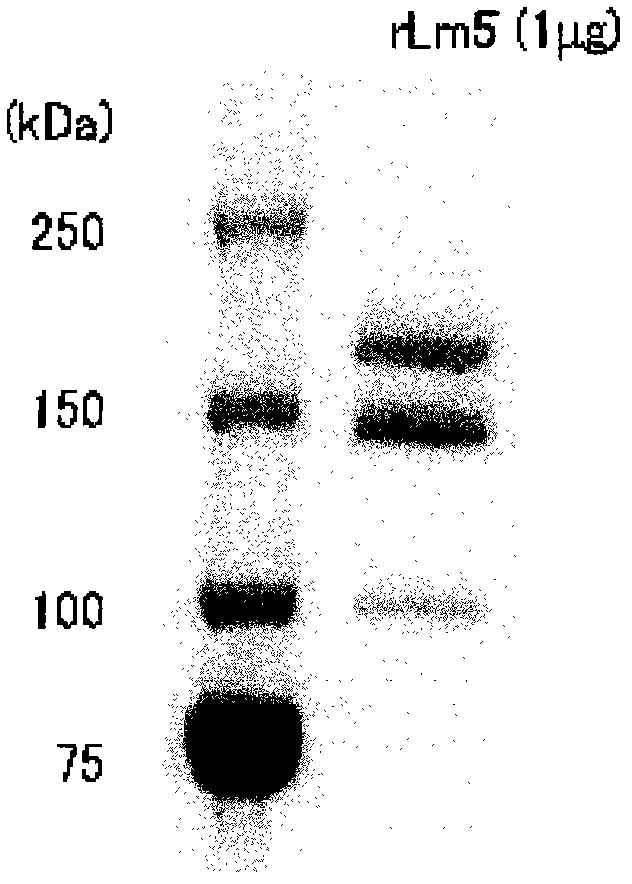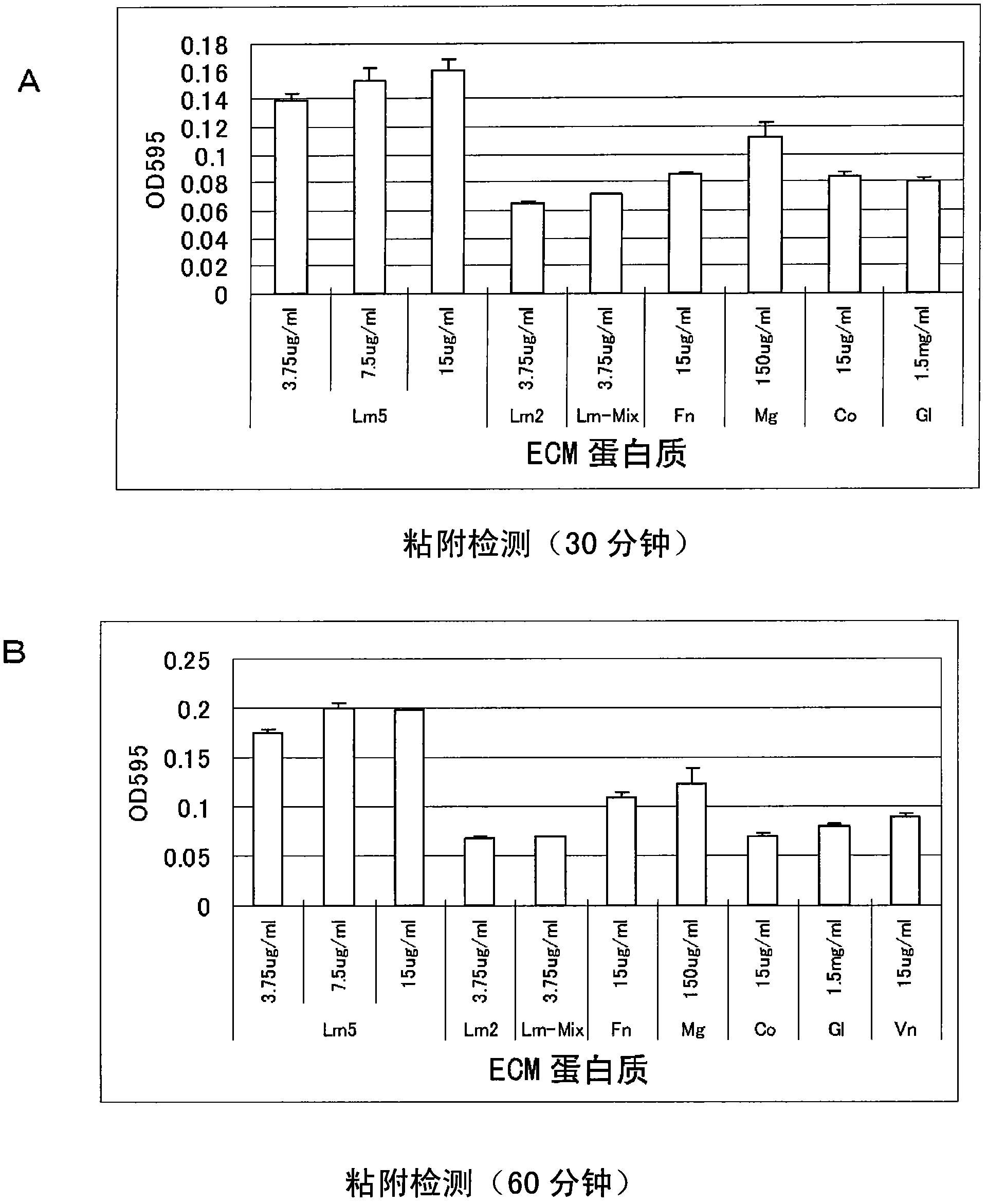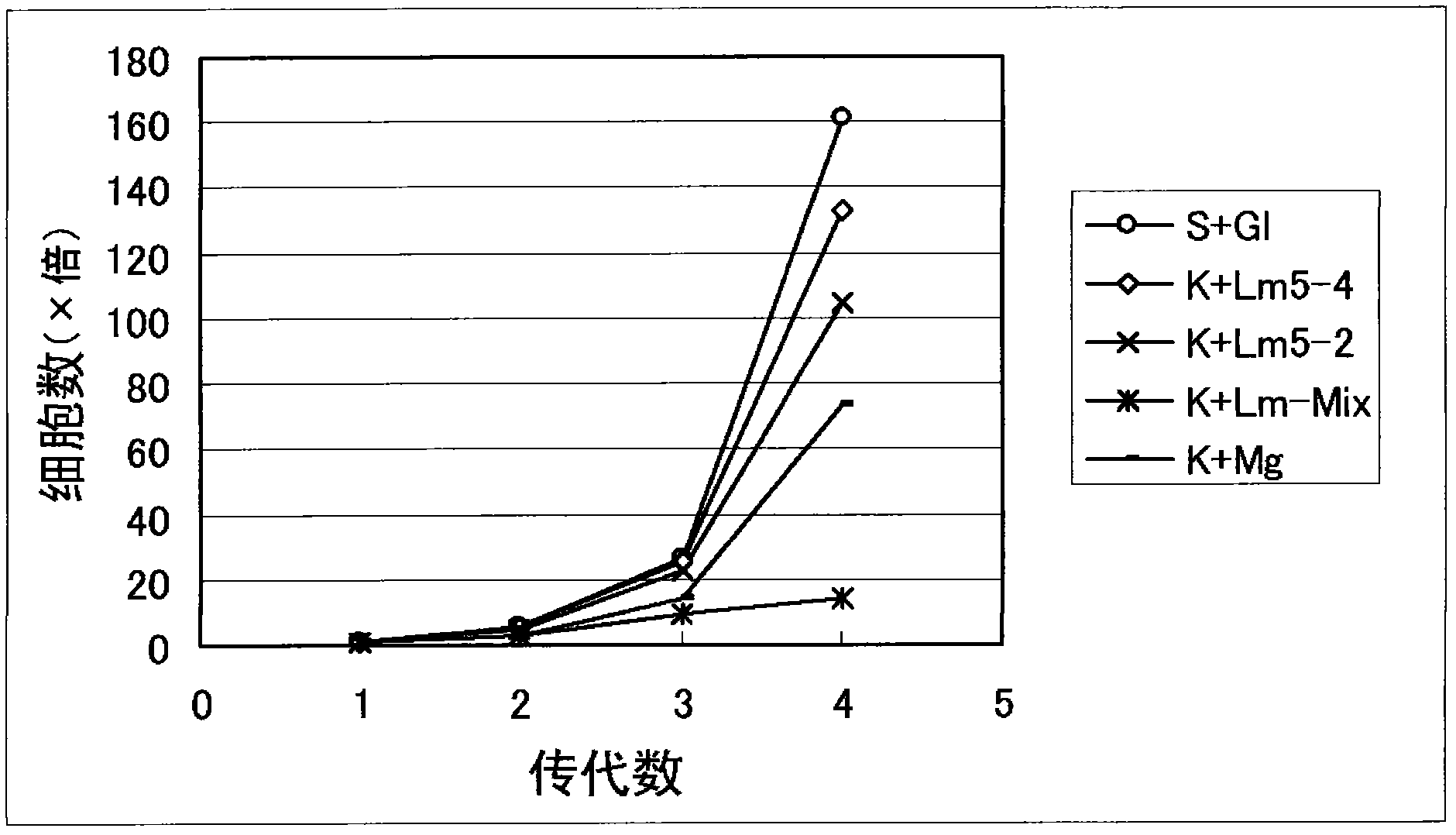Method for proliferation of pluripotent stem cell
A technology for pluripotent stem cells and supporting cells, applied in the field of pluripotent stem cell culture kits, can solve the problems of reduced efficiency and low cell adhesion efficiency, and achieve the effect of effective proliferation
- Summary
- Abstract
- Description
- Claims
- Application Information
AI Technical Summary
Problems solved by technology
Method used
Image
Examples
Embodiment 1
[0236] Embodiment 1 Modulation of recombinant human laminin-5 (rLm5)
[0237] In this example, recombinant human laminin-5 protein was prepared according to known methods.
[0238]The serum-free culture supernatant recovered from the human fetal kidney cell line HEK293 (Lm 5-HEK293) into which the cDNAs of α3 chain (SEQ ID NO: 1), β3 chain (SEQ ID NO: 3), and γ2 chain (SEQ ID NO: 5) were introduced was in Centrifuge at 3000 rpm for 5 minutes at 4°C. Human fetal kidney cell line HEK293 was obtained according to J. Biochem. 132, 607-612 (2002). Next, it was added to Heparin sepharose CL-6B (GE healthcare), and eluted. The rLm5-containing fraction was passed through an antibody column to which Protein A sepharose CL-6B (GE healthcare) was covalently bound to a mouse anti-Lm-α3 (anti-laminin-α3) monoclonal antibody (BG5), followed by elution . In addition, monoclonal antibody BG5 is an antibody produced by the present inventors by using the laminin-α3B chain N-terminal fragm...
Embodiment 2
[0241] Example 2 Adhesion experiment using mouse ES cell line EB3
[0242] This example shows the results of adhesion experiments using mouse ES cell line EB3 using various cell support materials.
[0243] Use supplemented with 10% fetal bovine serum (FBS), 0.1mM non-essential amino acids (Gibco), 1mM sodium pyruvate (Gibco), 1000U / ml ESGRO (Chemicon) and 10 -4 M 2-mercaptoethanol (WAKO) in GMEM (SIGMA) was used as a maintenance medium for mouse ES cell line EB3 cells. EB3 cells received EB3 cells provided by the G6 Molecular Therapeutics Lecture Stem Cell Control Field of Future Medical Development Major, Graduate School of Medicine, Osaka University.
[0244] In the adhesion test, a serum-free medium having the same composition as the maintenance medium without adding FBS was used. As cell support materials, bovine gelatin (SIGMA), rLm5, Matrigel (registered trademark, BD), human vitronectin (SIGMA), human type IV collagen (BD), human fibronectin (BD), human laminin pro...
Embodiment 3
[0249] Example 3 uses the proliferation detection of mouse ES cell line EB3
[0250] This example shows the results of the proliferation assay using the mouse ES cell line EB3 when various cell support materials were used.
[0251] The same medium as in Example 2 was used as the maintenance medium of EB3 cells. Added 10% KNOCKOUT for use in proliferation assays TM Serum Replacement (KSR) (Invitrogen) medium (KSR-GMEM) was used instead of 10% FBS. EB3 cells were seeded at 40,000 / well on 12-well plates (NUNC) treated with various extracellular matrix proteins at adjusted concentrations. At 37°C, 5% CO 2 After culturing for 2 days under the gas phase condition of 95% air, the cells were recovered by enzyme treatment, and the number of cells was counted with a counting plate.
[0252] Again, EB3 cells were seeded at 40,000 cells / well on 12-well plates treated with various extracellular matrix proteins after concentration adjustment. By repeating this operation, the prolifer...
PUM
 Login to View More
Login to View More Abstract
Description
Claims
Application Information
 Login to View More
Login to View More - R&D
- Intellectual Property
- Life Sciences
- Materials
- Tech Scout
- Unparalleled Data Quality
- Higher Quality Content
- 60% Fewer Hallucinations
Browse by: Latest US Patents, China's latest patents, Technical Efficacy Thesaurus, Application Domain, Technology Topic, Popular Technical Reports.
© 2025 PatSnap. All rights reserved.Legal|Privacy policy|Modern Slavery Act Transparency Statement|Sitemap|About US| Contact US: help@patsnap.com



